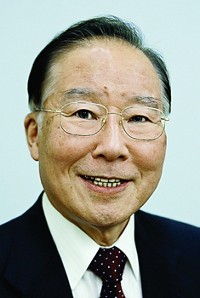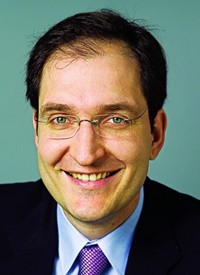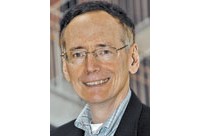Advertisement
Grab your lab coat. Let's get started
Welcome!
Welcome!
Create an account below to get 6 C&EN articles per month, receive newsletters and more - all free.
It seems this is your first time logging in online. Please enter the following information to continue.
As an ACS member you automatically get access to this site. All we need is few more details to create your reading experience.
Not you? Sign in with a different account.
Not you? Sign in with a different account.
ERROR 1
ERROR 1
ERROR 2
ERROR 2
ERROR 2
ERROR 2
ERROR 2
Password and Confirm password must match.
If you have an ACS member number, please enter it here so we can link this account to your membership. (optional)
ERROR 2
ACS values your privacy. By submitting your information, you are gaining access to C&EN and subscribing to our weekly newsletter. We use the information you provide to make your reading experience better, and we will never sell your data to third party members.
Synthesis
ACS Award for Creative Work in Fluorine Chemistry
January 16, 2006
| A version of this story appeared in
Volume 84, Issue 3
Sponsored by SynQuest Laboratories
Boris Žemva is a world leader in noble gas chemistry and has made major contributions to xenon and krypton chemistry. Now he is the winner of the ACS Award for Creative Work in Fluorine Chemistry.
The award recognizes Žemva's creative syntheses of high-oxidation-state species (including metastable fluorides), new fluorolanthanates, and novel salt series with cation ligands of HF, AsF3, and XeF2. The work on high-energy oxidizers resulted from his collaboration with Neil Bartlett, emeritus professor of chemistry at the University of California, Berkeley.
Žemva is currently a professor of inorganic chemistry at the University of Ljubljana, in Slovenia, and head of the department of inorganic chemistry and technology at the Jožef Stefan Institute, also in Ljubljana.
Žemva played an important role in the development of the large-scale photochemical preparation of krypton difluoride (KrF2) and the low-temperature nickel-fluoride-catalyzed preparation of xenon hexafluoride (XeF6). These potent oxidizing reagents, along with the solvent liquid anhydrous HF, have yielded a variety of new simple and complex fluorides, including the thermodynamically unstable fluorides NiF4, NiF3, AgF3, and CuF3. Much of this novel synthetic work has been carried out at or below room temperature.
Žemva's earliest work focused on studying the catalytic effect of transition-metal fluorides on the formation of xenon fluorides from xenon and fluorine. Later, he synthesized and characterized a large number of novel xenon(II) and xenon(VI) fluorometalates with NH4+, N2H5+, and N2H62+ salts as starting compounds.
Commending "another beautiful piece of work," one of Žemva's colleagues notes Žemva's recent study of the coordination of "naked" metal cations by different ligands. Of these, coordination compounds with XeF2 as a ligand-to-metal cation are the most important. These compounds show great structural diversity and represent an important contribution to coordination chemistry.
Žemva's work has practical applications, too. In connection with work for BASF, he holds a patent on an effective and economical fluorination method to render high-density polyethylene used in car fuel systems less permeable to hydrocarbons, especially when methanol is also present in the fuel.
What sets Žemva's work apart from that of most other researchers is the fact that most of it was achieved in Slovenia at a time when good facilities were not available and access to modern instrumentation was difficult.
Žemva, 65, received B.S., M.S., and Ph.D. degrees in chemistry from the University of Ljubljana in 1964, 1968, and 1971, respectively. He also received a B.A. in economics in 1983 from the University of Maribor, Slovenia. He began his teaching career at the Jožef Stefan Institute in 1965 and at the University of Ljubljana in 1974.
In 1989, he received the Boris Kidrič Award, the highest scientific honor in Slovenia. Ten years later, he received one of the most coveted scientific awards in Germany: the Humboldt Research Award. He was the Visiting Miller Research Professor at the University of California, Berkeley, in 1993, and in 1997 was also a visiting professor at the Institut de Chimie de la Matière Condensée de Bordeaux, in Pessac, France. In 2001, he was appointed ambassador of science of the Republic of Slovenia. He has been a member of the Engineering Academy of Slovenia since 1996.
The award address will be presented before the Division of Fluorine Chemistry.—Marc Reisch






Join the conversation
Contact the reporter
Submit a Letter to the Editor for publication
Engage with us on Twitter